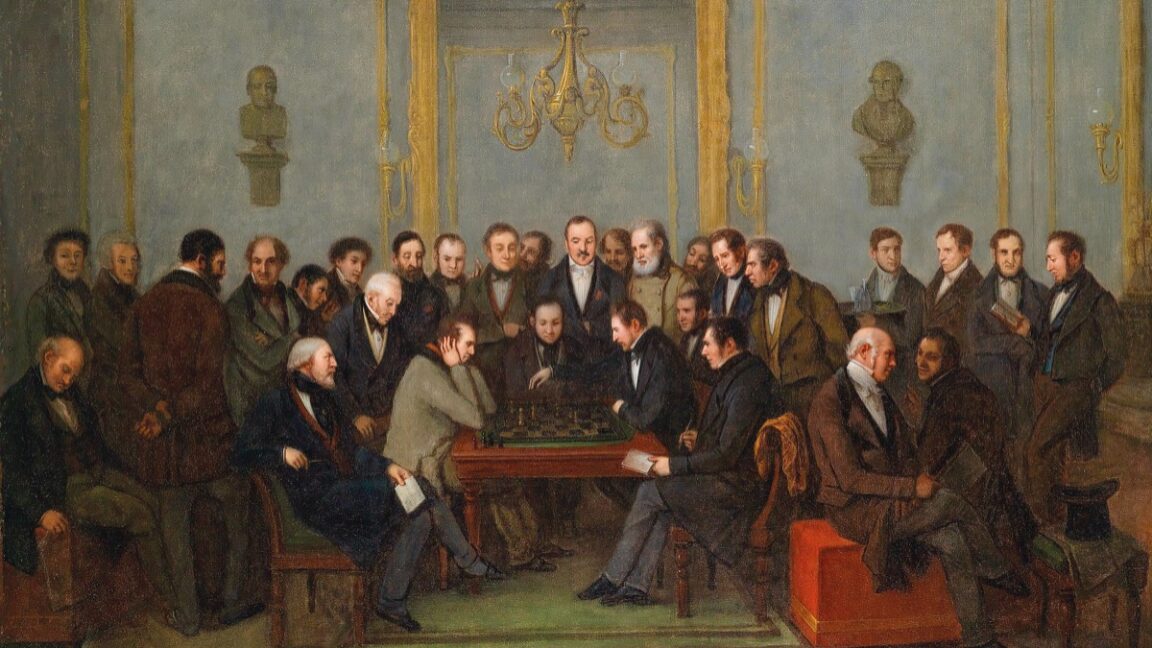ARSTECHNICA.COM
Complexity physics finds crucial tipping points in chess games
check and mate Complexity physics finds crucial tipping points in chess games Physicist used interaction graphs to show how pieces attack and defend to analyze 20,000 top matches. Jennifer Ouellette Jan 24, 2025 1:02 pm | 4 A depiction of the chess match between masters Howard Staunton and Pierre Saint-Amant, on 16 December 1843. Credit: Jean-Henri Marlet/Public domain A depiction of the chess match between masters Howard Staunton and Pierre Saint-Amant, on 16 December 1843. Credit: Jean-Henri Marlet/Public domain Story textSizeSmallStandardLargeWidth *StandardWideLinksStandardOrange* Subscribers only Learn moreThe game of chess has long been central to computer science and AI-related research, most notably in IBM's Deep Blue in the 1990s and, more recently, AlphaZero. But the game is about more than algorithms, according to Marc Barthelemy, a physicist at the Paris-Saclay University in France, with layers of depth arising from the psychological complexity conferred by player strategies.Now, Barthelmey has taken things one step further by publishing a new paper in the journal Physical Review E that treats chess as a complex system, producing a handy metric that can help predict the proverbial "tipping points" in chess matches.In his paper, Barthelemy cites Richard Reti, an early 20th-century chess master who gave a series of lectures in the 1920s on developing a scientific understanding of chess. It was an ambitious program involving collecting empirical data, constructing typologies, and devising laws based on those typologies, but Reti's insights fell by the wayside as advances in computer science came to dominate the field. That's understandable. "With its simple rules yet vast strategic depth, chess provides an ideal platform for developing and testing algorithms in AI, machine learning, and decision theory," Barthelemy writes.Barthelemy's own expertise is in the application of statistical physics to complex systems, as well as the emerging science of cities. He realized that the history of the scientific study of chess had overlooked certain key features, most notably how certain moves at key moments can drastically alter the game; the matches effectively undergo a kind of phase transition. The rise of online chess platforms means there are now very large datasets ripe for statistical analysis, and researchers have made use of that, studying power-law distributions, for example, as well as response time distribution in rapid chess and long-range memory effects in game sequences.For his analysis, Barthelemy chose to represent chess as a decision tree in which each "branch" leads to a win, loss, or draw. Players face the challenge of finding the best move amid all this complexity, particularly midgame, in order to steer gameplay into favorable branches. That's where those crucial tipping points come into play. Such positions are inherently unstable, which is why even a small mistake can have a dramatic influence on a match's trajectory.A case of combinatorial complexity Example on a position taken from Mehedlishvili-Van Forrest. Marc Barthelemy, 2025 Example on a position taken from Mehedlishvili-Van Forrest. Marc Barthelemy, 2025 Interaction graph showing white knight as the key piece in the preceding position. Marc Barthelemy, 2025 Interaction graph showing white knight as the key piece in the preceding position. Marc Barthelemy, 2025 Example on a position taken from Mehedlishvili-Van Forrest. Marc Barthelemy, 2025 Interaction graph showing white knight as the key piece in the preceding position. Marc Barthelemy, 2025 Barthelemy has re-imagined a chess match as a network of forces in which pieces act as the network's nodes, and the ways they interact represent the edges, using an interaction graph to capture how different pieces attack and defend one another. The most important chess pieces are those that interact with many other pieces in a given match, which he calculated by measuring how frequently a node lies on the shortest path between all the node pairs in the network (its "betweenness centrality").He also calculated so-called "fragility scores," which indicate how easy it is to remove those critical chess pieces from the board. And he was able to apply this analysis to more than 20,000 actual chess matches played by the world's top players over the last 200 years.Barthelemy found that his metric could indeed identify tipping points in specific matches. Furthermore, when he averaged his analysis over a large number of games, an unexpected universal pattern emerged. We observe a surprising universality: the average fragility score is the same for all players and for all openings, Barthelemy writes. And in famous chess matches, "the maximum fragility often coincides with pivotal moments, characterized by brilliant moves that decisively shift the balance of the game.Specifically, fragility scores start to increase about eight moves before the critical tipping point position occurs and stay high for some 15 moves after that. "These results suggest that positional fragility follows a common trajectory, with tension peaking in the middle game and dissipating toward the endgame," he writes. "This analysis highlights the complex dynamics of chess, where the interaction between attack and defense shapes the game's overall structure."Physical Review E, 2025. DOI: 10.1103/PhysRevE.00.004300 (About DOIs).Jennifer OuelletteSenior WriterJennifer OuelletteSenior Writer Jennifer is a senior writer at Ars Technica with a particular focus on where science meets culture, covering everything from physics and related interdisciplinary topics to her favorite films and TV series. Jennifer lives in Baltimore with her spouse, physicist Sean M. Carroll, and their two cats, Ariel and Caliban. 4 Comments
